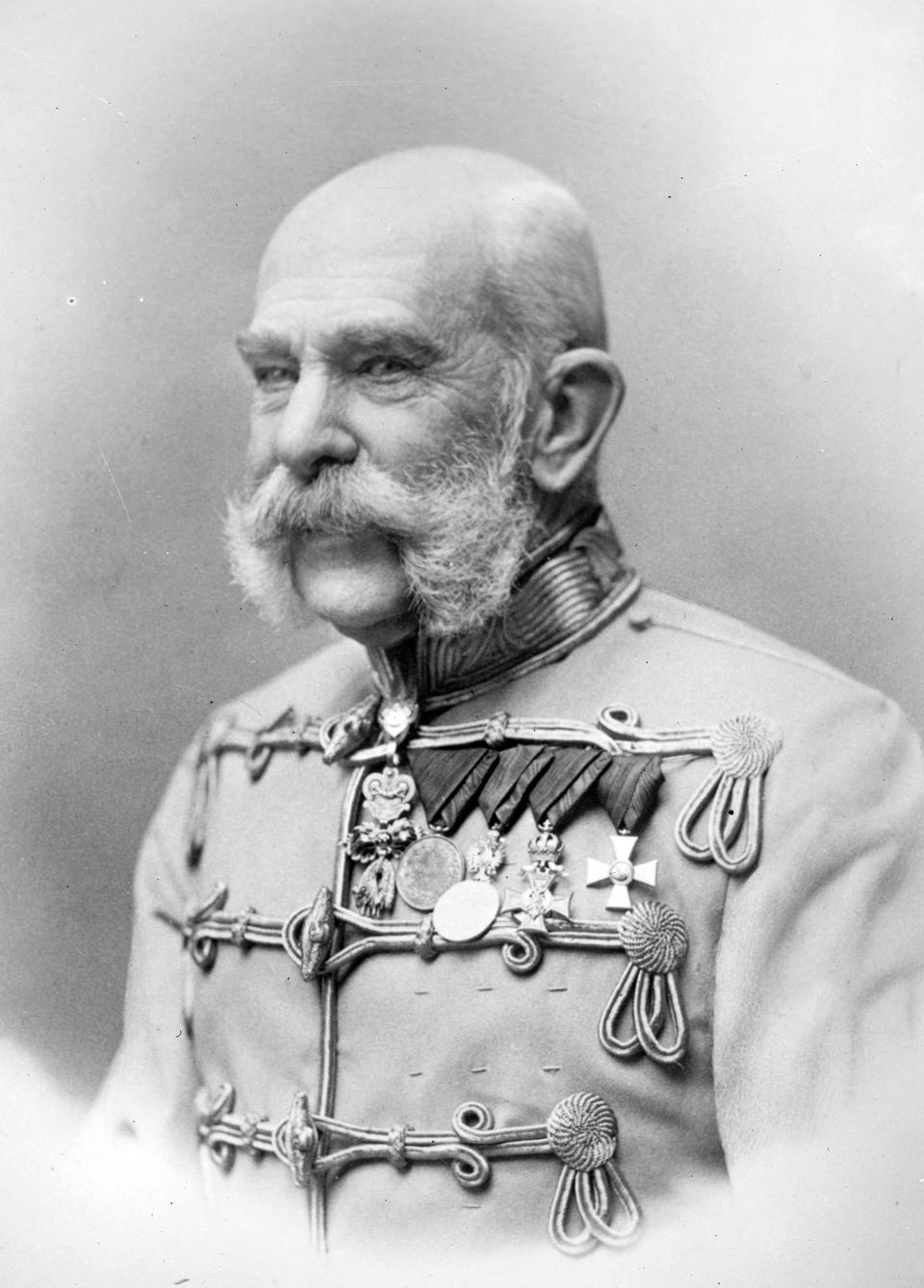
Franz Joseph I of Austria
Franz Joseph I or Francis Joseph I (German: Franz Joseph Karl [fʁants ˈjoːzɛf ˈkaʁl]; Hungarian: Ferenc József Károly [ˈfɛrɛnt͡s ˈjoːʒɛf ˈkaːroj]; 18 August 1830 – 21 November 1916) was Emperor of Austria, King of Hungary, and the ruler of the other states of the Habsburg monarchy from 2 December 1848 until his death in 1916.[1] In the early part of his reign, his realms and territories were referred to as the Austrian Empire, but were reconstituted as the dual monarchy of the Austro-Hungarian Empire in 1867. From 1 May 1850 to 24 August 1866, he was also president of the German Confederation.
"Franz Joseph" redirects here. For other uses, see Franz Joseph (disambiguation).Franz Joseph I
2 December 1848 – 21 November 1916
8 June 1867
Matthias Church
(as King of Hungary)
2 December 1848 – 12 October 1866
Ferdinand I
Ferdinand I
Wilhelm I
(as Head of the North German Confederation)
18 August 1830
Schönbrunn Palace, Vienna, Austrian Empire
21 November 1916 (aged 86)
Schönbrunn Palace, Vienna, Austria-Hungary
In December 1848, Franz Joseph's uncle Emperor Ferdinand I abdicated the throne at Olomouc, as part of Minister President Felix zu Schwarzenberg's plan to end the Hungarian Revolution of 1848. Franz Joseph then acceded to the throne. In 1854, he married his cousin Duchess Elisabeth in Bavaria, with whom he had four children: Sophie, Gisela, Rudolf, and Marie Valerie. Largely considered to be a reactionary, Franz Joseph spent his early reign resisting constitutionalism in his domains. The Austrian Empire was forced to cede its influence over Tuscany and most of its claim to Lombardy–Venetia to the Kingdom of Sardinia, following the Second Italian War of Independence in 1859 and the Third Italian War of Independence in 1866. Although Franz Joseph ceded no territory to the Kingdom of Prussia after the Austrian defeat in the Austro-Prussian War, the Peace of Prague (23 August 1866) settled the German Question in favour of Prussia, which prevented the unification of Germany from occurring under the House of Habsburg.[2]
Franz Joseph was troubled by nationalism throughout his reign. He concluded the Austro-Hungarian Compromise of 1867, which granted greater autonomy to Hungary and created the dual monarchy of Austria-Hungary. He ruled peacefully for the next 45 years, but personally suffered the tragedies of the execution of his brother Emperor Maximilian I of Mexico in 1867, the suicide of his son Rudolf in 1889, and the assassinations of his wife Elisabeth in 1898 and his nephew and heir presumptive, Archduke Franz Ferdinand, in 1914.
After the Austro-Prussian War, Austria-Hungary turned its attention to the Balkans, which was a hotspot of international tension because of conflicting interests of Austria with not only the Ottoman but also the Russian Empire. The Bosnian Crisis was a result of Franz Joseph's annexation in 1908 of Bosnia and Herzegovina, which had already been occupied by his troops since the Congress of Berlin (1878). On 28 June 1914, the assassination of Archduke Franz Ferdinand in Sarajevo resulted in Austria-Hungary's declaration of war against the Kingdom of Serbia, which was an ally of the Russian Empire. This activated a system of alliances declaring war on each other, which resulted in World War I. Franz Joseph died in 1916, after ruling his domains for almost 68 years. He was succeeded by his grandnephew Charles I & IV.
Styles of
Franz Joseph I of Austria and Hungary
Your Imperial and Royal Apostolic Majesty
Your Imperial and Royal Majesty
Your Apostolic Majesty